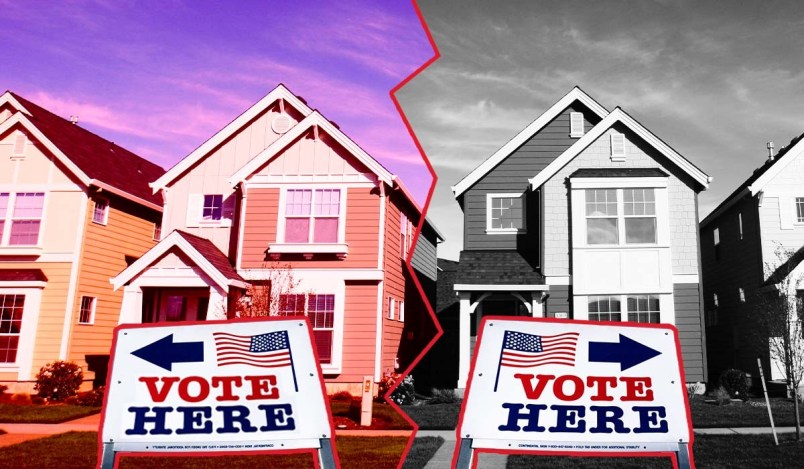In recent election cycles, a new power dynamic has driven Democrats to victory and captured the attention of those who track voting patterns: the “blueing” of the suburbs.
Around major metropolitan areas in key states, the suburbs swung hard for Democrats — particularly in 2020 — emerging as a decisive voting force.
There are multiple contributing factors to this shift, but one undeniable piece is the diversification of communities that once were almost entirely white.
“The truth is, a lot of minority groups are not as urban-centric as they historically have been,” Adam Podowitz-Thomas, senior legal strategist at the Princeton Gerrymandering Project, told TPM.
“Particularly looking at Latino populations, they are not actually as clustered in specifically urban places as, historically, Black populations have been,” he added. “And Black communities are moving to the suburbs too.”
That migration raises a tantalizing prospect for Democrats: a dynamic in places like Georgia and Pennsylvania where the city strongholds are ringed with multiracial communities composed of voters who traditionally vote blue.
But Democrats’ dream is Republicans’ target. As red states have sliced and diced centers of Democratic power in this round of redistricting, advocacy groups, individual voters and even the United States government have called foul in lawsuits challenging the gerryrigged maps.
One of the major ones, Georgia NAACP v. Raffensperger, accuses the state of purposefully attacking these emergent multiracial coalitions to diffuse their power.
“The Controlling Party’s lawmakers and their map drawers diluted the voting strength of Black, Latinx, and AAPI voters in specific regions described in this Complaint, particularly in areas that witnessed significant growth of communities of color in the past decade, packing or cracking communities of color into districts,” the Georgia NAACP writes.
It’s a different flavor of racial gerrymandering from cases centering on a single minority groups, which have also triggered a flood of lawsuits.
In cases like this one, experts expect red states to challenge whether these multiracial coalitions are protected under the Voting Rights Act — a question without a clear legal answer. Some circuit courts — including the 5th and 11th, which rule over politically important southern states like Georgia and Texas — have ruled that such coalitions are protected under the marquee, now gutted, voting law; another court said they’re not. Many, including the Supreme Court, are silent on the issue.
“There are going to be aggressive arguments about whether minority coalition districts are covered,” Michael Li, senior counsel at NYU’s Brennan Center for Justice, said. “Those voters could be in for a world of hurt.”
As of now, there’s no legal consensus on whether a coalition of minority groups can be a plaintiff in a VRA lawsuit.
The coalition, among other things, would have to satisfy the requirement that its members vote cohesively. To show a minority group’s voting preferences in the first place requires some extrapolation, since ballots are, of course, secret. But it’s easier to draw a conclusion if you have a district that’s almost completely composed of one minority group.
In coalitions, each minority group might only make up 10 or 15 percent of the district, making it harder to prove how any one group votes.
And some voting rights groups are nervous to even try to bring a coalition challenge given the foreboding silence of the very conservative Supreme Court. With the VRA already in tatters, some are wary to give the Court another chance to rip away more of its protections.
“There seems to be consensus that conservative judges are less likely to accept coalitional claims,” Douglas Spencer, associate professor at the University of Colorado Law School, told TPM. “There’s a concern that you could go to the Supreme Court and lose.”
Whether or not these coalitions have legal protections matters immensely in the many places where one minority group is not large enough to make up the majority of voters in the district.
“As people migrate out to the suburbs, there’s usually not a large enough population of any one racial group to really bring a successful VRA claim,” Spencer said.
But combining the groups into a minority coalition could surpass that majority threshold — and become even more of a powerful force.
“You can see it in the suburbs of Atlanta,” Spencer added. “There’s not enough Black movement out of the city yet to create a majority Black seat. But if you put it together with the Hispanic community, you might just get there.”



